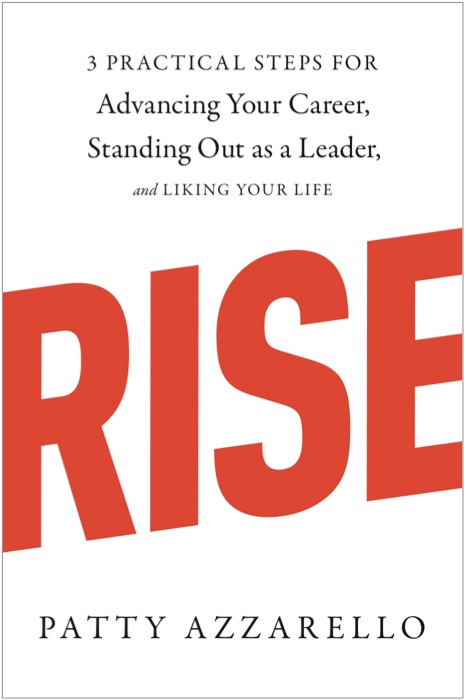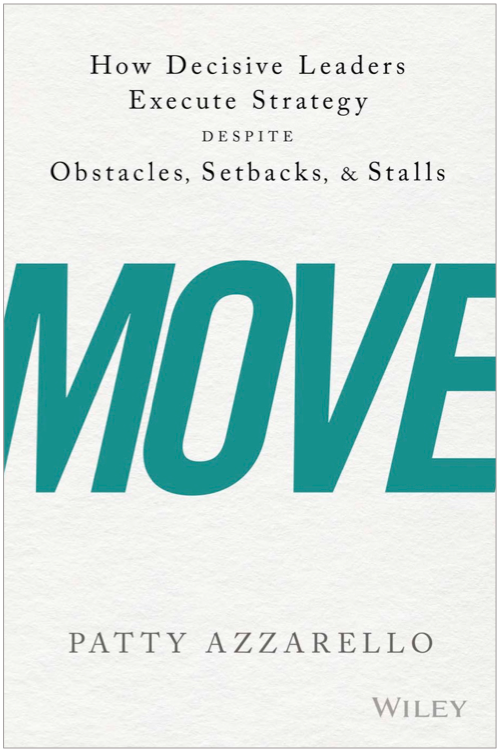Customer Service
It all starts with one executive decision.
Every company has one, single, strategic decision to make about customer service. That decision is cost or care?
Here is what I mean:
If you make the decision for Cost:
You have made the decision to provide customer service only because you have to, and you want to do it at the lowest possible cost.
Companies who have chosen Cost are those that don’t publish their phone number on their website. Then if you do manage to call in, you are greeted with impenetrable, automated voice system. Then after making 6 levels of selections, you are dumped out and have a dial tone again.
These companies are not trying to provide actual service. They have made the strategic choice to provide a minimal customer service footprint at the lowest possible cost. (Think utility companies.)
or
If you make the decision for Care:
In this case you have made a strategic decision to provide customer service as a differentiator. So it has to be good.
Companies who have chosen care are those that provide a support capability to understand what the customer needs, and then allow their staff the judgement, and their systems the flexibility, to actually solve the customer’s problem.
Cost or Care? That is the top decision. All subsequent decisions, staff behaviors, and customer experiences start with this one decision.
What service do you get?
When you are face to face (or phone to phone) with a customer representative, ask yourself, is this person instructed, motivated, encouraged and authorized to actually help me?
Or are they being instructed and paid to not help me at all. Has their company through making a cost decision, set them up to infuriate me by not helping, then saying, “I apologize for the inconvenience, can I do anything else to help you?” (ref: AT&T)
The investment in Care
There are 3 key factors to providing customer care:
1. Motivation
2. Systems
3. Training & Authorization
1. Motivation
Remember, your customer service staff has the direct link to your customers.
What is their motivation? Is it to solve the problem and create a happy customer? (care) or Is it to “close the trouble ticket”? (cost)
If your staff is paid on the number of tickets it closes, you have made a strategic “cost” decision. There is no motivation to solve problems because that takes longer to do than to (quickly) not be helpful, and then close the ticket.
By the way, I hate the phrase “trouble ticket”. It is a back-end, non-human way to describe that a human is having a a problem. If you have any kind of end user support system, delete the phrase “trouble ticket” and replace it with “customer disappointment” or something similar that represents what it actually is.
If you make the Care decision, you need to make the measure “number of customer problems solved” not “number of tickets closed”.
2. Systems
If you have your systems locked down so that employees can never call a customer back, never issue a refund, or an upgrade, you have made a cost decision. By the way, you have also made a motivation decision – if you lock your systems down, you don’t want your service agents to actually think and solve problems. So they will be unmotivated to personally help and instead tell your customers, “the system won’t let me do that”.
3. Training and Authorization
Finally, if you choose “care” in motivation and systems, you also need to provide training and authorization so that your service staff knows how to deliver what you intend, that they know what good service means to you, and they don’t feel like they will get in trouble for providing it.
For example the Ritz Carleton hotel chain has (or had at one time and a one site) a policy that any employee can at any time go to the front desk and get up to $275 of cash to solve a customer problem on the spot with no approvals. That is a Care decision that shows investment in motivation (YOU decide and YOU do it), an investment in systems (no systems in the way, just go to the petty cash drawer), and training and authorization (Ritz provides customer service training to all its employees).
What service are you getting?
You can determine a company’s customer service strategy based on observing their behaviors and noting thier investment in: Motivation, Systems, Authorization and Training. It becomes pretty clear how they made that initial strategic decision: Care or Cost?
A Story
A few years ago I shared this story on the blog, so for some of you this story is a summer re-run.
But it’s a good one! This story illustrates how various customer service organizations performed on Motivation, Systems, Authorization and Training when I encountered a travel mishap.
Let’s start with Motivation.
1. Motivation
I was traveling with my husband to the UK on United, but the flight from the US was cancelled, we were re-routed on Lufthansa, but our luggage did not arrive with us.
Care Decision: People believe it is their job to solve the customer problem
Cost Decision: People believe it is their job to close the “trouble ticket”
(Cost) On Day 2 in the UK of still not having our luggage, the United baggage service rep said, We found the bag. It will be put on the first plane to London this morning. Once it is there, it will be routed according to the lost bag claim you filed and you will be called regarding delivery. From now on you should call the Lufthansa phone number associated with your lost bag claim. (i.e., Don’t call me again, “trouble ticket” closed.)
(Cost) On day 4 of not having luggage, we called the Lufthansa lost bag people who told us that the bag had been flown to Munich, and is scheduled on the flight from Munich to London to arrive at 16:55 at which time we will be phoned to so the bag can be “rushed to us”.
(Cost) At 18:00, after not receiving said phone call, we called the Lufthansa lost bag people again, who told us that they have identified the bag and it is in San Francsico. Outright lying and making up information about flights to Munich was a new twist on bad service for me!
(Care!) Next: Finally thinking to call the United 1K baggage service vs. the standard phone number, I got someone on the phone who was actually motivated to solve the problem. It is a shame that United has made the actual “care” choice only apply to their top tier customers. But, the agent, Grace, apologized for the problem, took personal action, got a hold of our bag personally, re-tagged it and got it on the next flight to London – the one she said it was on. She called the next day to follow up, but once it was in London, it went into Lufthansa’s system.
OK, next let’s look at the systems choices that were in play…
2. Systems
Care Decision: The systems are equipped to allow credits, upgrades, refunds, make outbound phone calls and allow the person to say “yes”.
Cost Decision: The systems are locked down to prevent any cost incursions no matter what the customer situation. No reason or business judgment on the part of the service agent can make a difference. The service person is only able to report, “the system won’t let me do that”.
(Cost) Once the bag was actually in London and needed to be delivered to us, the Lufthansa “Express Bag Delivery Service” was not able to call a US mobile phone number to arrange where to deliver our bag. So they simply didn’t call. When we called them, and tried to expedite, they said “We’ll send a Telex to our depot“. A Telex??? Talk about a technology/system investment. How about a pigeon? …. I digress.
We also learned that their system for their “same day delivery service”, only allowed them to, and I quote,“hopefully deliver the bag tomorrow”. As it turns out their system also did not allow them to update our contact phone number or the current delivery address. So they ended up not calling, and ultimately delivered the bag to the place we were three days earlier.
(Care) This did NOT happen, but an example of a system that allowed for care might have an “harmed customer button”, (that may require a supervisor passcode) to get to a screen that would allow outbound phone calls to any phone number and the ability to route the task to a third party, actual “same day” delivery service.
Finally, authorization and training…
3. Authorization & Training – Customer Service Strategy
Care Decision: People are trained to listen, think, and make judgment, expected and encouraged to actually solve problems. People are allowed to incur cost to solve a customer problem.
Cost Decision: People get fired for incurring cost to solve a customer problem. People are trained to only read what is on the screen and instructed to say “I am sorry for the inconvenience. Is there anything else I can help you with?”
(Cost) On my way home a week later (still without the bag, by the way) when I told the story to a United agent about being a 1K traveler whose weekend in the Lake District was ruined do to a cancelled flight, and a bag of hiking gear being over a week late, and my husband is staying in the UK to collect the bag from where it was delivered to the wrong place said this and only this: “my system will not allow me to upgrade you”.
I think we all know that in this case the agent was using the “system” as an excuse for what was a training, authorization, and motivation issue.
(Care) I waited until a bit closer to the flight time, and then went to the transfer desk inside security. I told my story again to another United Agent. I was at this point doing an experiment to determine how many United agents I would need to tell this story to, to find someone who even cared a little. Turns out to be three. Finally, Hema Amin, at the transfer desk in LHR heard this story and actually said:
That’s terrible. I’m so sorry your vacation was ruined. I can’t upgrade you myself, but I will call my supervisor to get a code to allow me to upgrade you. I told her that whatever happened from this point on that she was a star for being the first person to care at all, and that I greatly appreciated it. I did not embellish the story I told her, but she called her supervisor on her cell phone after not getting through on the desk phone, and told a story on my behalf including all the details I gave her and ending in “so things just went from bad to worse, and I think we should upgrade her”. She got the approval, and I was upgraded.
Cutting Costs without Cutting Quality of Service
I’m not suggesting that companies provide limitless service and don’t worry about cost at all. You need to understand the financial value of keeping a customer and find ways to cut the cost of customer service without cutting the care. It’s possible if you start with the strategic decision of providing care first, then cutting cost as a tactic, not as a strategy.
I wrote a follow-on article about this here: Customer Value and the P&L
Was this useful?
If you found this article useful, please help me share it with others and encourage them to subscribe to this Blog for free.
About Patty
Patty Azzarello is an executive, best-selling author, speaker and CEO/Business Advisor. She became the youngest general manager at HP at the age of 33, ran a billion dollar software business at 35 and became a CEO for the first time at 38 (all without turning into a self-centered, miserable jerk)
You can find Patty at www.AzzarelloGroup.com, follow her on twitter or facebook, or read her book RISE…3 Practical Steps for Advancing Your Career, Standing Out as a Leader, AND Liking Your Life.




